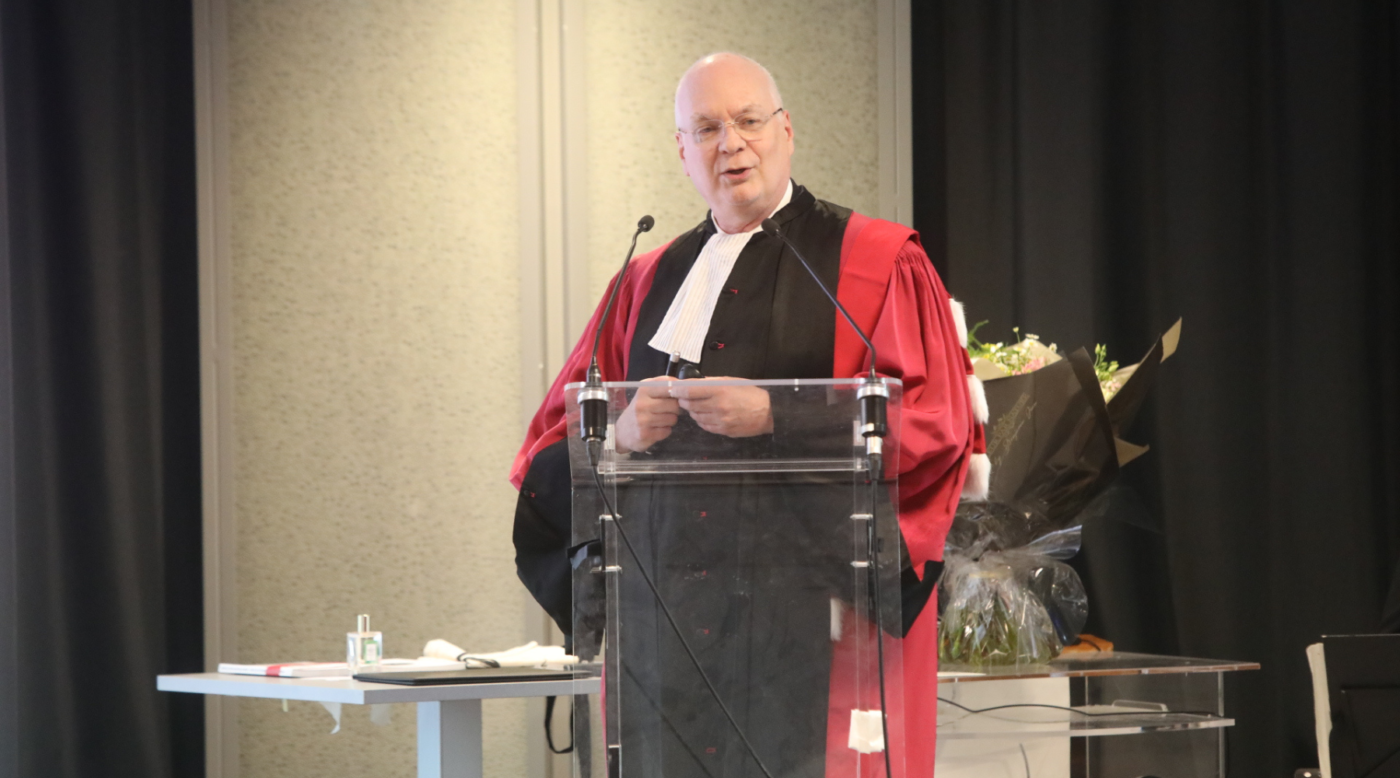Source: UdeM Nouvelles
An honorary doctorate has been awarded to Michel Bouvier for his work on G protein-coupled receptors (GPCRs) and his contribution to scientific advances in the field of molecular pharmacology. The highest distinction in higher education was awarded to him by the University of Montpellier during a ceremony held on April 13.
A full professor in the Department of Biochemistry and Molecular Medicine at the Université de Montréal, Michel Bouvier is one of the leading figures in the field of GPCRs. During his career, he has participated in the emergence of new scientific concepts such as oligomerization and biased signaling, as well as the development of novel therapeutic compounds targeting GPCRs. Several technological innovations are also attributed to him, such as the bioluminescence resonance energy transfer technique, which allows quantitative measurement of protein-protein interactions, post-translational modifications and conformational rearrangements of molecules in living cells. Many of his discoveries are still used today by the pharmaceutical industry in the development of various drugs.
As Chief Executive Officer of IRIC, he has established an original model of partnership between academia and the pharmaceutical industry. His efforts have also led to the creation of a double master’s degree between UdeM and the University of Montpellier, as well as the establishment of several collaborations between his laboratory’s team and those of the French institution. Twelve researchers from the University of Montpellier did their postdoctoral training in Michel Bouvier’s laboratory in Montreal. This resulted in several scientific advances and articles, such as the discovery of a novel mechanism of transactivation of a receptor with tyrosine kinase activity, the IGF1 receptor, by a GPCR, the vasopressin V2 receptor.
Michel Bouvier is certainly one of the most creative researchers of his generation,” said Philippe Marin, director of the Montpellier Institute of Functional Genomics. A prolific author, he has to his credit publications that have had a very strong impact on the scientific community, as evidenced by the 40,237 citations they have received and his exceptional H-index of 111. There is no doubt that he has made an outstanding contribution to scientific knowledge and to the transfer of this knowledge to revolutionary technological applications and new therapies.”

